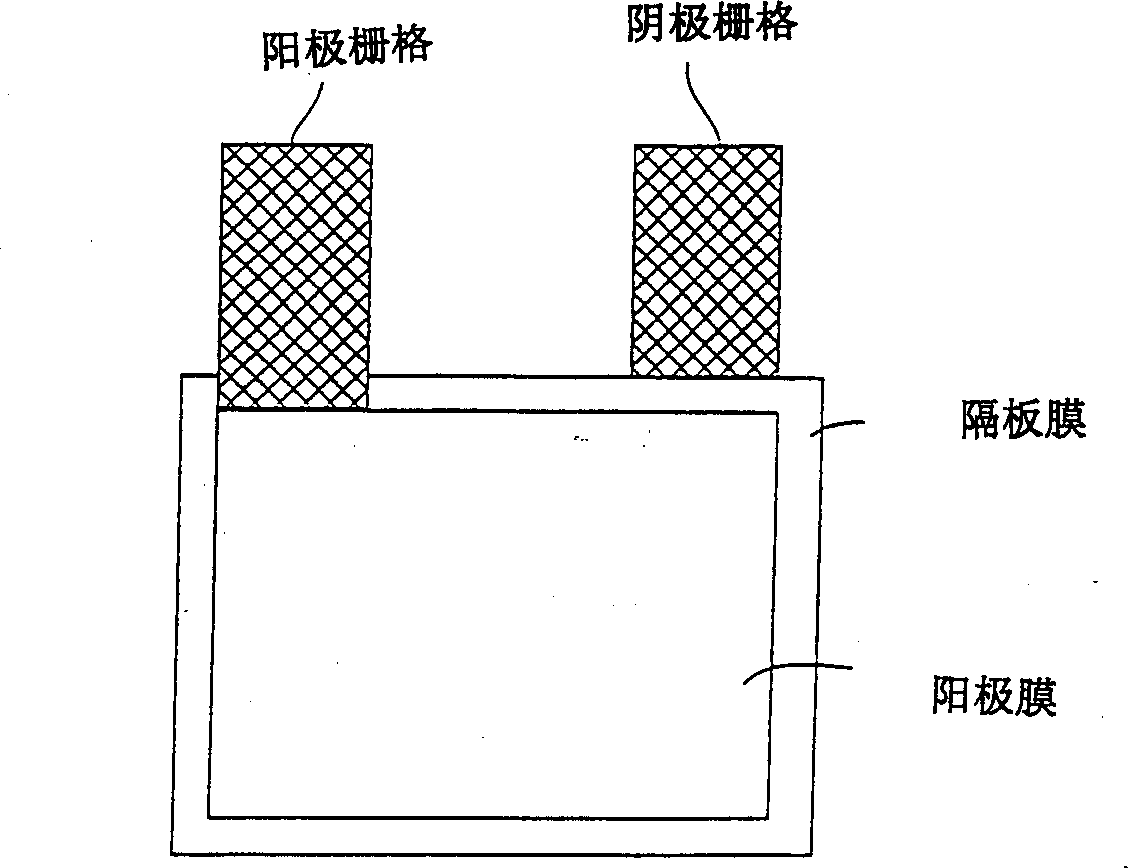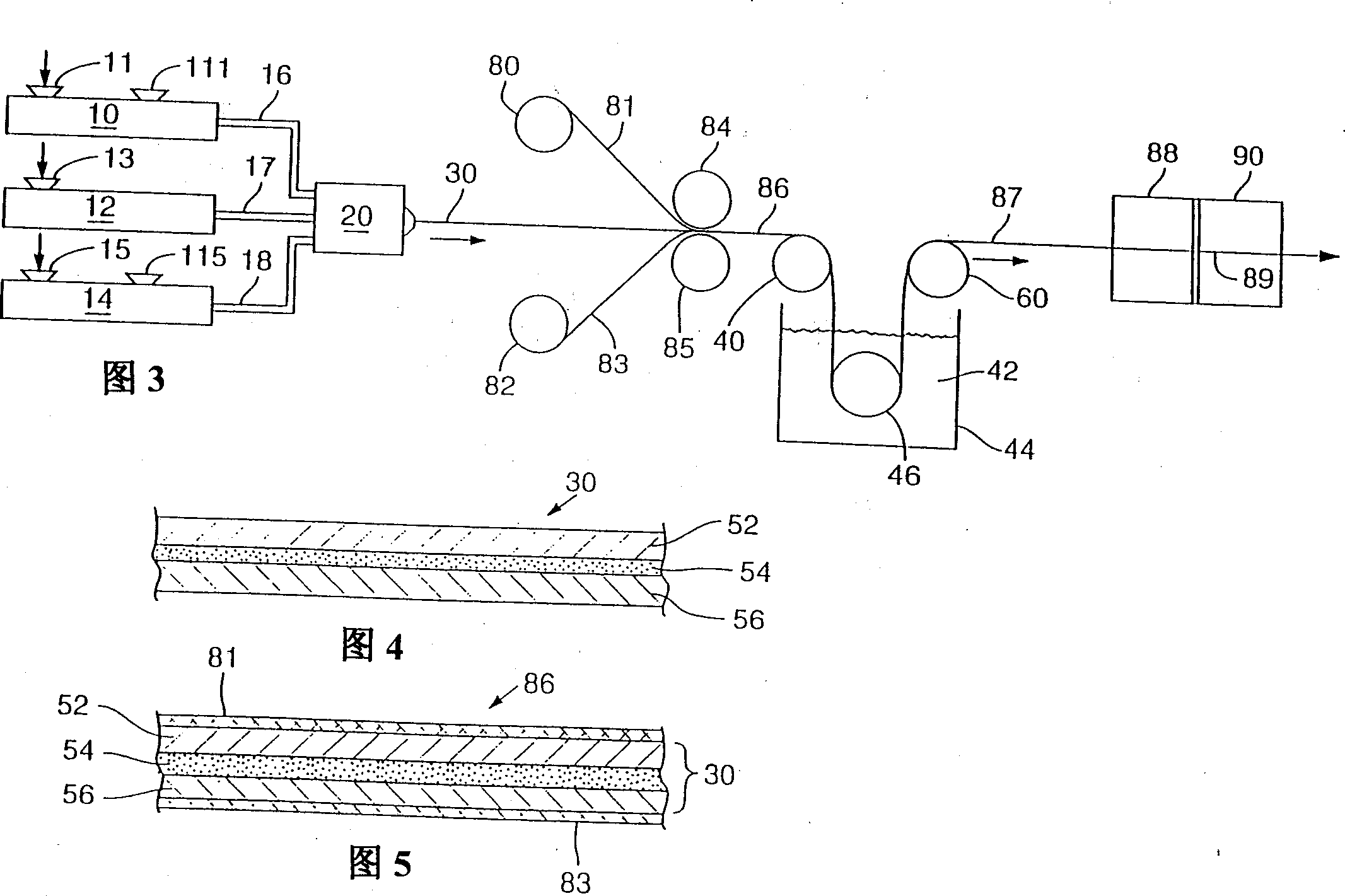Electrically conductive freestanding microporous polymer sheet
A technology of microporous polymers and polymers, applied in circuits, capacitors, primary batteries, etc., can solve the problems that the application of porous membrane electrodes has not been realized.
- Summary
- Abstract
- Description
- Claims
- Application Information
AI Technical Summary
Problems solved by technology
Method used
Image
Examples
Embodiment 1
[0027] Embodiment 1: preparation zinc-containing plate
[0028] UHMWPE (1900 HCM; Montell Polyolefin, 2.1 g) was added to zinc powder (particle size TM 3681 Process Oil (Shell Oil Co., 9.2 g). The oily mixture was stirred until a free flowing state was obtained, then the mixture was placed in a HAAKE Rheomix 600 small intensive mixer equipped with roller blades and driven by a HAAKE Rheocord 90 torque Rheometer, rotating at 80 RPM and set at 180 ℃. Additional process oil (8.0 g) was added to the mixing chamber. The resulting mixture was mixed for 5 minutes to obtain a homogeneous cohesive mass. This material was transferred to a C.W. Brabender PrepMill Model PM-300, two roll mill, rotating at 15 rpm and set at 150°C. The roll gap was adjusted to about 0.7 mm and the resulting polymer sheet was removed from the roll with a take-off knife.
[0029] The plate was cooled to room temperature and then a 40 mm x 60 mm sample was cut from the plate with a doctor blade...
Embodiment 2
[0038] Embodiment 2: Preparation of nickel-containing plate
[0039] UHMWPE (1900 HCM; Montell Polyolefin, 2.64 g) was added to nickel powder (3 μm particle size; Aldrich Chemical Co., 56.0 g) placed in a 250 ml plastic beaker. Mix the powder with a spatula until a homogeneous mixture is formed, at which point ShellFlex TM 3681 Process Oil (Shell Oil Co., 12.0 g). The oily mixture was stirred until a free flowing state was obtained, then the mixture was placed in a HAAKE Rheomix 600 small intensive mixer with roller blades driven by a HAAKE Rheocord 90 torque Rheometer, rotating at 80 RPM and set at 180 ℃. Additional process oil (8.0 g) was added to the mixing chamber. The resulting mixture was mixed for 5 minutes to obtain a homogeneous cohesive mass. This material was transferred to a C.W. Brabender Prep-Mill Model PM-300, two roll mill, rotating at 15 rpm and set at 150°C. The roll gap was adjusted to about 0.4 mm and the resulting polymer sheet was r...
Embodiment 3
[0042] Embodiment 3: prepare graphite-containing plate
[0043] UHMWPE (1900 HCM; Montell polyolefin, 10.0 g) and conductive carbon black (Super P; MMM carbon, 5.0 g) were added to graphite powder (BG-35; Superior Graphite Co., 85.0 g) placed in a 250 ml plastic beaker. g). The powder is mixed using a spatula until a homogeneous mixture is formed, at which point ShellFlex TM 3681 Process Oil (Shell Oil Co., 20.0 g). The oily mixture was stirred until a free flowing state was obtained, then the mixture was placed in a HAAKE Rheomix 600 small intensive mixer equipped with roller blades and driven by a HAAKERheocord 90 torque Rheometer, rotating at 80 RPM and set at 180°C. Additional process oil (80.0 g) was added to the mixing chamber. The resulting mixture was mixed for 5 minutes to obtain a homogeneous cohesive mass. This material was transferred to a C.W. Brabender Prep-Mill Model PM-300, two roll mill, rotating at 15 rpm and set at 150°C. The roll gap was...
PUM
| Property | Measurement | Unit |
|---|---|---|
| thickness | aaaaa | aaaaa |
| thickness | aaaaa | aaaaa |
| thickness | aaaaa | aaaaa |
Abstract
Description
Claims
Application Information
 Login to View More
Login to View More - R&D Engineer
- R&D Manager
- IP Professional
- Industry Leading Data Capabilities
- Powerful AI technology
- Patent DNA Extraction
Browse by: Latest US Patents, China's latest patents, Technical Efficacy Thesaurus, Application Domain, Technology Topic, Popular Technical Reports.
© 2024 PatSnap. All rights reserved.Legal|Privacy policy|Modern Slavery Act Transparency Statement|Sitemap|About US| Contact US: help@patsnap.com










